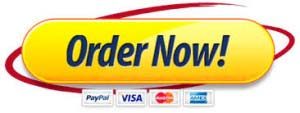It is necessary for an RN-BSN-prepared nurse to demonstrate an enhanced understanding of the pathophysiological processes of disease, the clinical manifestations and treatment protocols, and how they affect clients across the life span.
Evaluate the Health History and Medical Information for Mr. C., presented below.
Based on this information, formulate a conclusion based on your evaluation, and complete the Critical Thinking Essay assignment, as instructed below.
Health History and Medical Information
Health History
Mr. C., a 32-year-old single male, is seeking the information at the outpatient center regarding possible bariatric surgery for his obesity. He currently works at a catalog telephone center. He reports that he has always been heavy, even as a small child, gaining approximately 100 pounds in the last 2-3 years. Previous medical evaluations have not indicated any metabolic diseases, but he says he has sleep apnea and high blood pressure, which he tries to control by restricting dietary sodium. Mr. C. reports increasing shortness of breath with activity, swollen ankles, and pruritus over the last 6 months.
Objective Data:
- Height: 68 inches; weight 134.5 kg
- BP: 172/98, HR 88, RR 26
- 3+ pitting edema bilateral feet and ankles
- Fasting blood glucose: 146 mg/dL
- Total cholesterol: 250 mg/dL
- Triglycerides: 312 mg/dL
- HDL: 30 mg/dL
- Serum creatinine 1.8 mg/dL
- BUN 32 mg/dl
Critical Thinking Essay
In 750-1,000 words, critically evaluate Mr. C.’s potential diagnosis and intervention(s). Include the following:
- Describe the clinical manifestations present in Mr. C.
- Describe the potential health risks for obesity that are of concern for Mr. C. Discuss whether bariatric surgery is an appropriate intervention.
- Assess each of Mr. C.’s functional health patterns using the information given. Discuss at least five actual or potential problems that can you identify from the functional health patterns and provide the rationale for each. (Functional health patterns include health-perception, health-management, nutritional, metabolic, elimination, activity-exercise, sleep-rest, cognitive-perceptual, self-perception/self-concept, role-relationship, sexuality/reproductive, coping-stress tolerance.)
- Explain the staging of end-stage renal disease (ESRD) and contributing factors to consider.
- Consider ESRD prevention and health promotion opportunities. Describe what type of patient education should be provided to Mr. C. for the prevention of future events, health restoration, and avoidance of deterioration of renal status.
- Explain the type of resources available for ESRD patients for nonacute care and the type of multidisciplinary approach that would be beneficial for these patients. Consider aspects such as devices, transportation, living conditions, return-to-employment issues.


